Joro Spiders Are Spreading And Here’s What To Do If You Find One In Your Garden
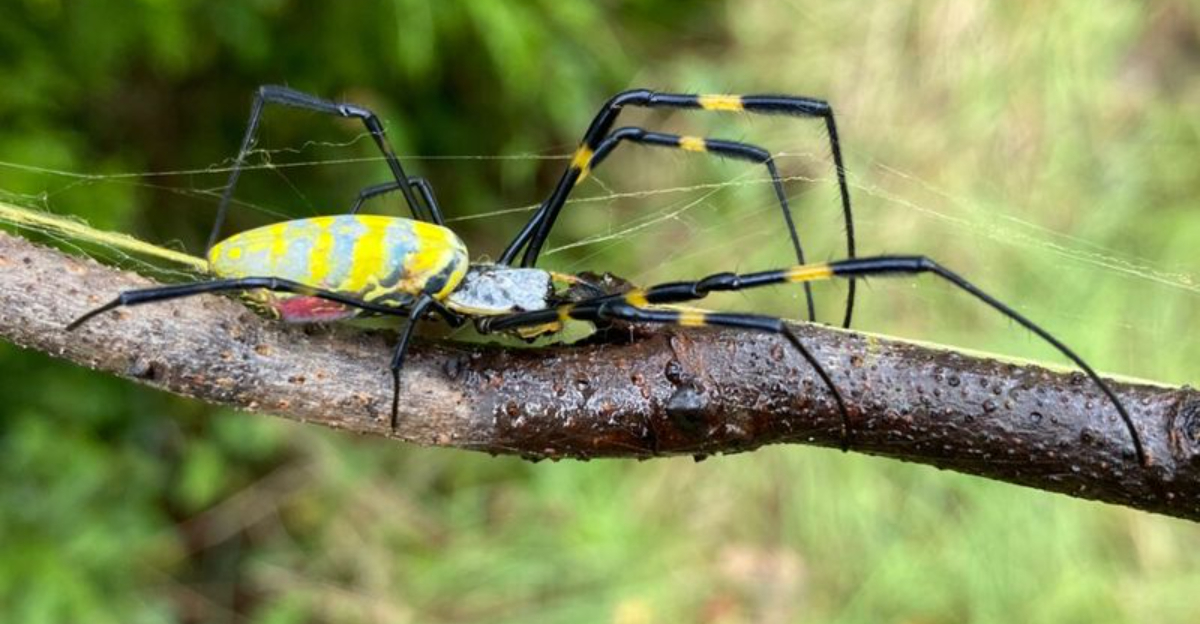
The vibrant yellow Joro spider, native to East Asia, has been making headlines as it rapidly spreads across the southeastern United States. These large, colorful arachnids with distinctive yellow and blue-black patterns can build massive golden webs spanning several feet.
While their sudden appearance in your garden might be alarming, understanding how to respond to these eight-legged newcomers can help you make informed decisions about whether to remove them or let them stay.
Learn To identify Them Correctly
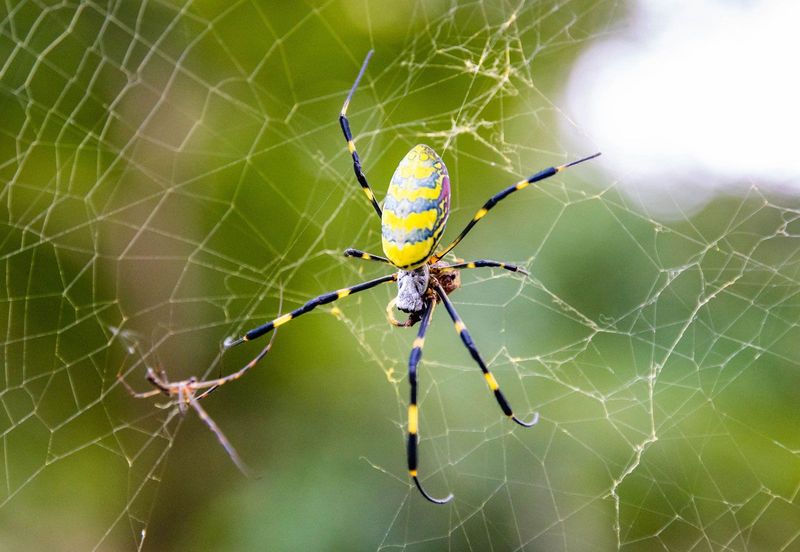
Joro spiders are unmistakable with their vibrant yellow bodies striped with blue-black markings and distinctive red markings on their undersides. Females are impressively large, measuring up to 3-4 inches across including their legs, while males remain much smaller.
Their most notable feature is their massive, golden-hued webs that can span 10 feet across and are often built high between trees or structures. These three-dimensional webs have a unique golden sheen when catching sunlight.
Don’t confuse them with banana spiders or garden spiders, which have different patterns and smaller webs.
Stay Calm – They’re Mostly Harmless
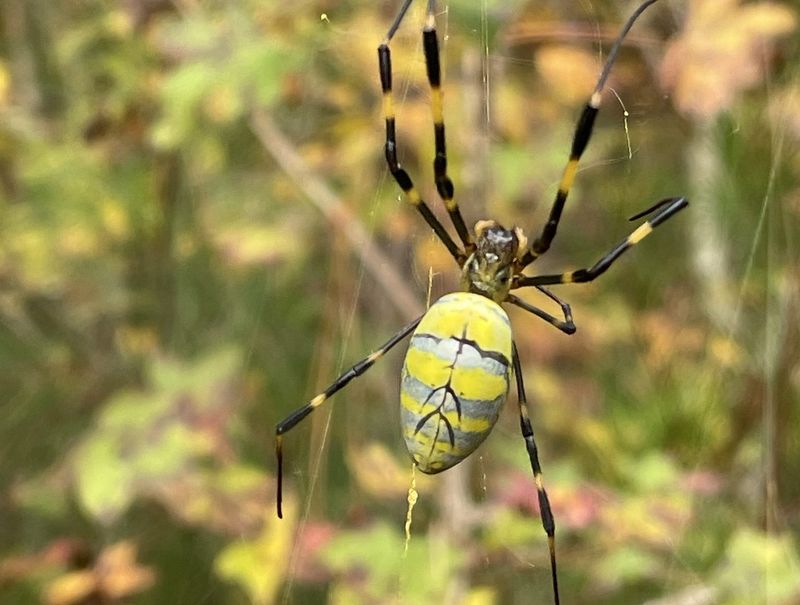
When encountering a Joro spider, your first instinct might be panic, but there’s little reason for alarm. Their venom isn’t dangerous to humans – it’s designed for small insects, not people. A bite would feel similar to a mild bee sting and is extremely rare.
Scientists studying these arachnids have handled them repeatedly without incident. Joro spiders are naturally timid and prefer fleeing to confrontation when disturbed.
They don’t actively hunt humans or pets, instead staying in their webs and waiting for flying insects to become ensnared. Your peaceful coexistence is virtually guaranteed if you simply give them space.
Consider Their Ecological Benefits
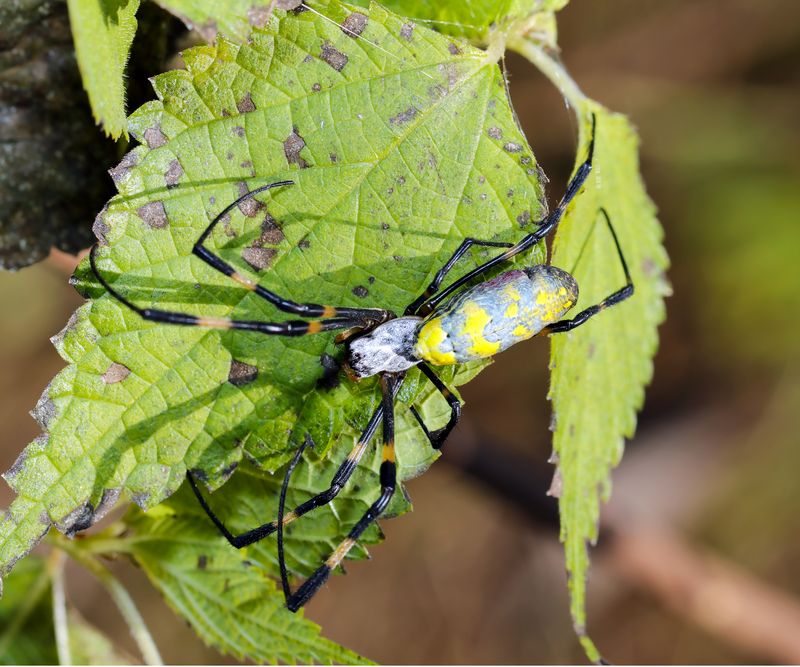
Joro spiders act as natural pest control specialists in your garden ecosystem. Their massive golden webs efficiently trap mosquitoes, stink bugs, and even invasive brown marmorated stink bugs that damage crops and gardens.
Research from the University of Georgia suggests a single Joro web can capture hundreds of insects daily. Unlike many other invasive species, Joro spiders appear to integrate into local ecosystems without causing significant disruption to native wildlife.
By consuming problematic insects, these colorful arachnids might actually benefit your garden plants and reduce the need for chemical pesticides. Their presence often indicates a healthy, insect-rich environment.
Relocate Them With A Simple Capture Method
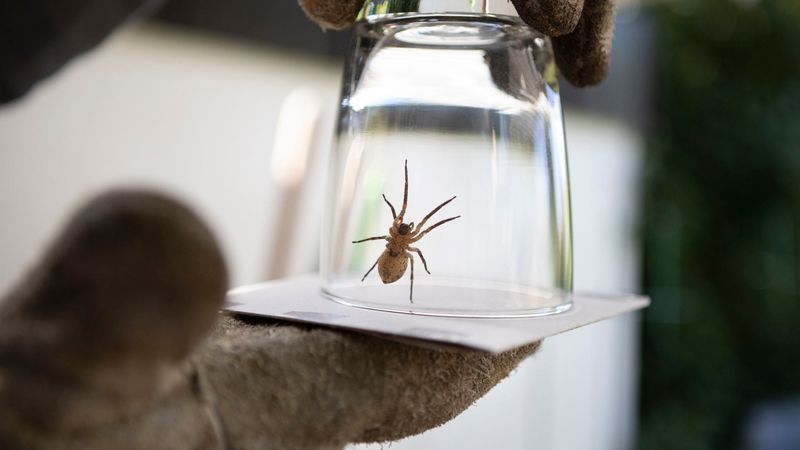
If you’re uncomfortable having a Joro spider nearby, you can safely relocate it without killing it. Grab a clear container and a stiff piece of paper or cardboard. Carefully place the container over the spider, then slide the paper underneath to create a temporary trap.
Joro spiders move relatively slowly when not alarmed, making them easier to capture than many other spider species. Avoid grabbing their webs directly, as this might trigger a defensive response.
Once captured, transport your eight-legged friend to a wooded area at least 100 feet from your home. Release it near trees where it can establish a new web away from human activity.
Remove Webs With A Stick Or Broom
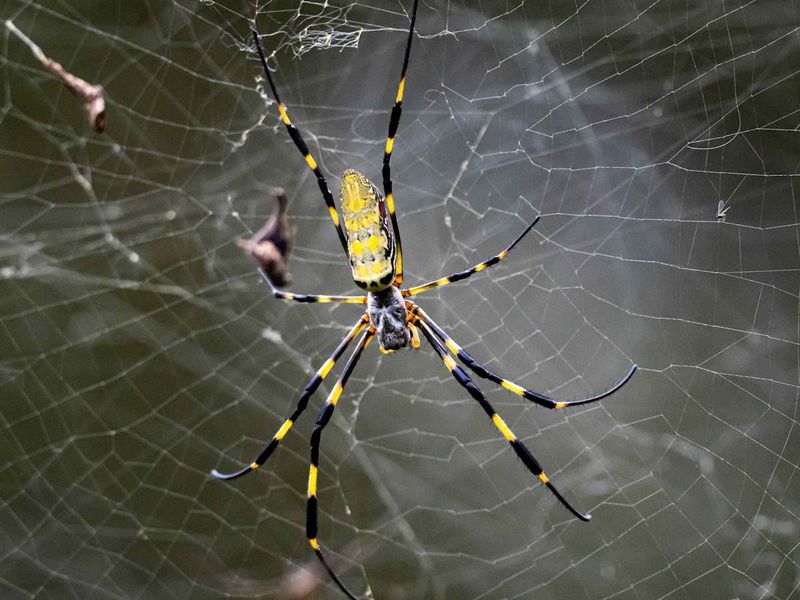
Joro spiders construct massive, golden-hued webs that can span impressive distances between trees, plants, or structures. To remove these webs without harming yourself or unnecessarily stressing the spider, use a long stick or broom to gently sweep the web away.
Morning is the best time for web removal since the spiders are typically less active. Wrap the collected webbing around your stick and dispose of it in an outdoor trash can.
For high webs, extension poles designed for cleaning gutters work perfectly. Remember that if you remove a web but leave the spider, it will likely rebuild nearby within a day or two.
Create Spider-Free Zones With Essential Oils
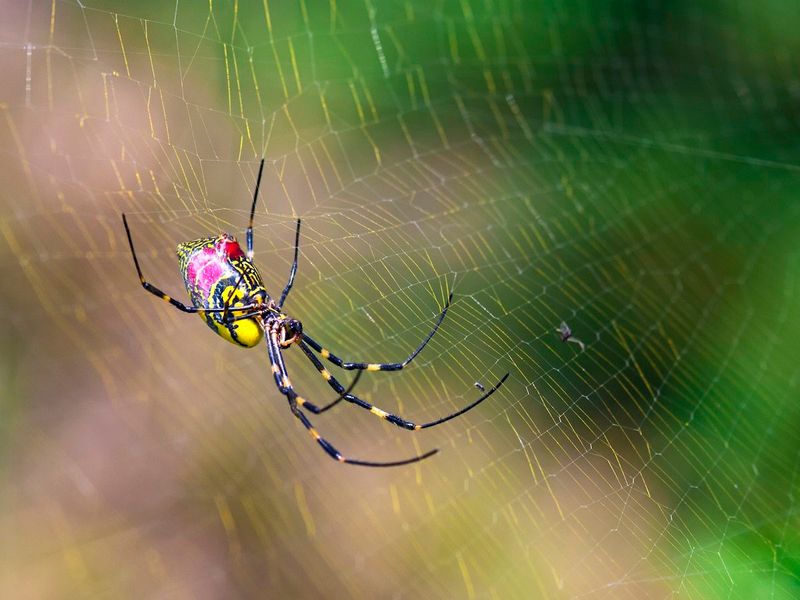
Spiders detect scents through special sensory organs on their legs, and certain fragrances naturally repel them. Create a simple spider deterrent by mixing 15-20 drops of peppermint, tea tree, or citrus essential oil with water in a spray bottle.
Apply this mixture around doorways, windows, garden furniture, and other areas where you’d prefer spiders not to build webs. The strong scent disrupts their sensory perception and encourages them to build elsewhere.
Reapply every few days, especially after rain. This method creates spider-free zones without harmful chemicals, allowing Joro spiders to remain in your garden’s periphery where they can still capture pest insects without bothering you.
Document Their Spread For Citizen Science
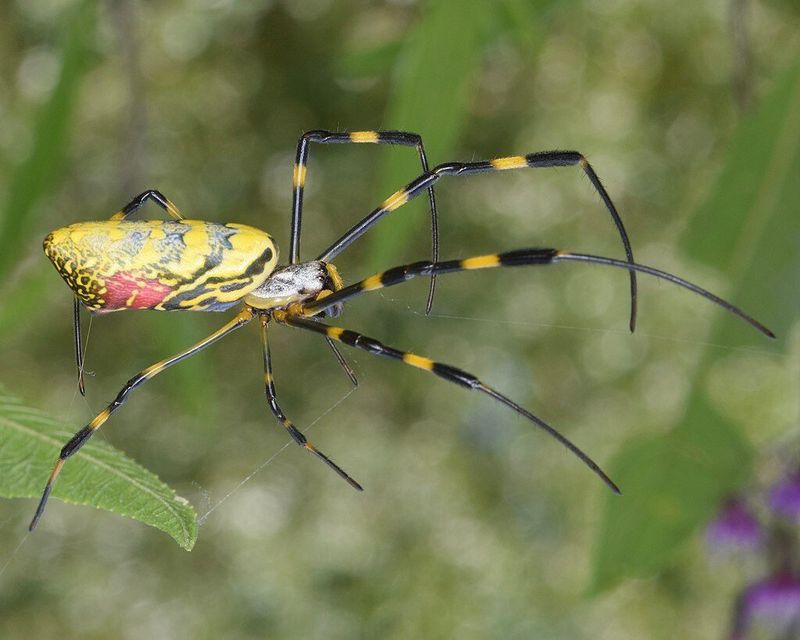
Scientists are actively tracking the Joro spider’s expansion across North America, and your observations can contribute valuable data to this research. Take clear photographs when you spot one, noting the date, time, and precise location.
Several citizen science platforms welcome Joro spider reports, including iNaturalist, BugGuide, and specific university research projects. Your documentation helps researchers understand how quickly these spiders are spreading and which environments they prefer.
University of Georgia researchers particularly encourage public reporting through their Joro Spider Project. This collaborative approach between scientists and the public provides crucial insights into this non-native species’ potential long-term impact on North American ecosystems.
Protect Specific Garden Areas With Physical Barriers
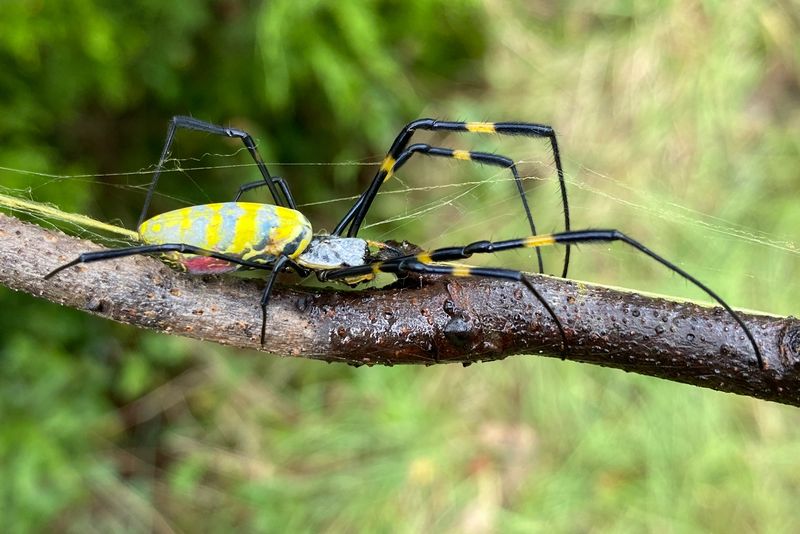
For garden spaces where you absolutely don’t want Joro spiders establishing webs, physical barriers offer effective protection. Fine mesh netting secured over garden seating areas, children’s play spaces, or prized plant collections prevents spiders from building webs in these zones.
Garden supply stores sell various mesh screens specifically designed for pest exclusion. Choose options with openings smaller than 1/4 inch to effectively block even juvenile Joro spiders.
Another approach is installing bamboo or reed fencing around specific garden sections. These create wind barriers that make web-building difficult, as Joro spiders prefer connecting their webs between stable points in relatively still air.
Watch For Egg Sacs In Fall And Winter
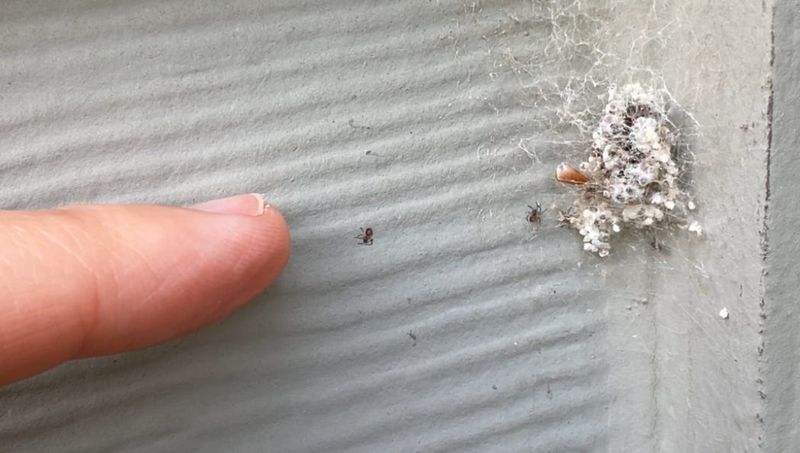
Female Joro spiders produce distinctive egg sacs in late fall before the first frost. These silk-wrapped bundles contain hundreds of eggs and appear as pale yellow or whitish oval pouches about the size of a grape, often hidden in protected locations near the web.
The eggs overwinter and hatch in spring, releasing tiny spiderlings that disperse by “ballooning” – catching wind currents with silk threads. Removing egg sacs during winter months can significantly reduce next year’s population in your immediate area.
Use a stick to carefully detach the sac, then dispose of it in a sealed container in your trash. Always wear gloves when handling spider egg sacs as a precaution.
Reduce Outdoor Lighting That Attracts Their Prey
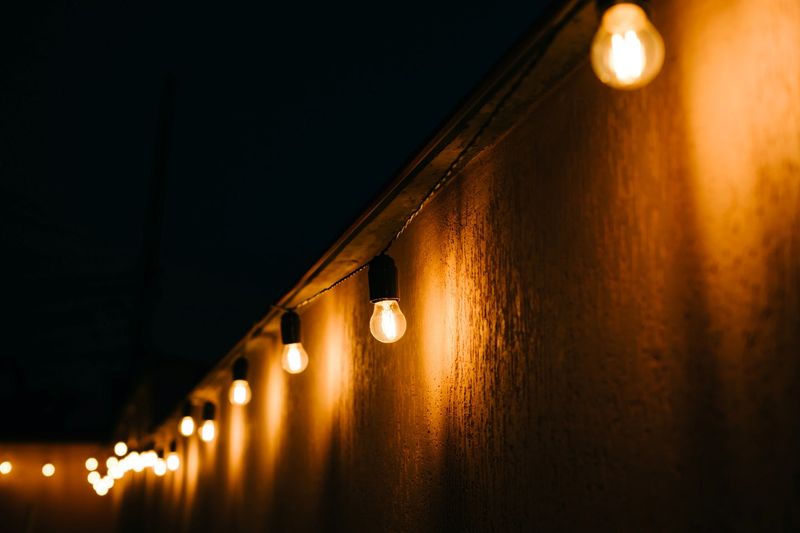
Bright outdoor lights act as insect magnets, drawing in the flying bugs that Joro spiders love to catch. By minimizing unnecessary outdoor lighting, especially during evening hours, you’ll reduce the food supply that makes your garden attractive to these web-builders.
When outdoor lighting is necessary, consider switching to yellow “bug lights” that attract fewer insects. Motion-activated lights that only illuminate when needed also help reduce the constant insect presence that supports spider populations.
Positioning lights away from gathering areas and entrances directs any insect activity away from spaces where you’d prefer not to encounter spider webs.
Teach Children About Them Without Fear
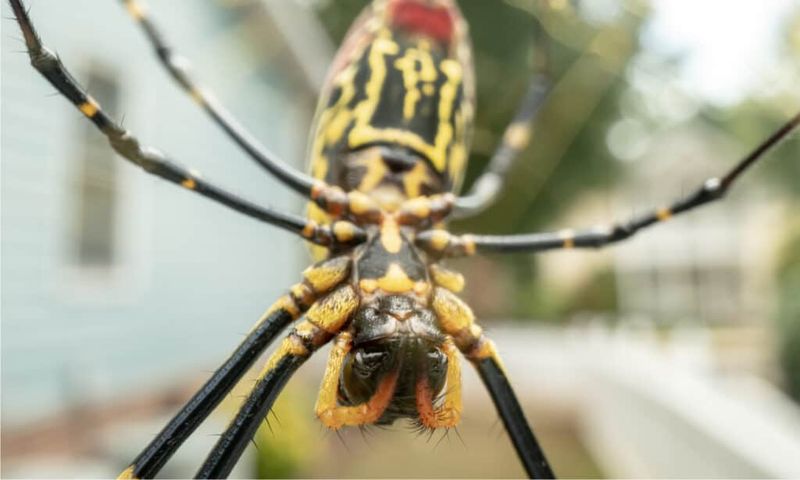
Children naturally absorb adults’ attitudes toward wildlife, so approach Joro spiders as fascinating creatures rather than threats. Explain how these colorful arachnids help gardens by catching pest insects and how their beautiful golden webs showcase amazing engineering skills.
Establish simple safety rules – observe spiders from a respectful distance without touching. Use this opportunity to teach the difference between harmful and beneficial garden creatures.
Consider creating a “spider safari” with magnifying glasses to observe web construction from a safe distance. Books about spiders can further nurture curiosity while establishing accurate information about these misunderstood garden allies.
Understand Their Annual lLifecycle
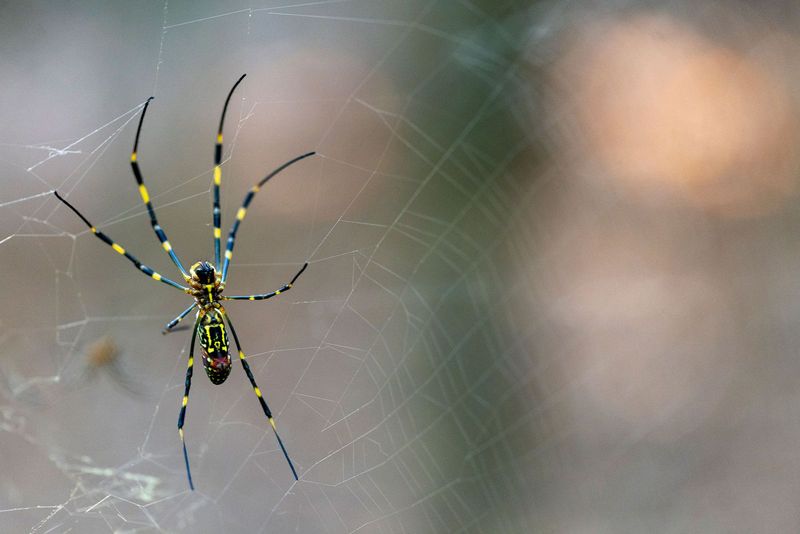
Joro spiders follow a predictable annual pattern in North America. Tiny spiderlings emerge from egg sacs in late spring, initially building small webs close to their hatching site. Throughout summer, surviving females grow rapidly, molting several times and constructing increasingly larger webs.
By late summer and early fall, adult females reach their impressive full size and build their largest webs. This coincides with peak mating season when the much smaller males actively search for female partners.
After mating and laying eggs in silken sacs, adult Joro spiders die with the first hard frosts of late fall or early winter. Understanding this cycle helps predict when you’ll encounter them and when they’ll naturally disappear.
Keep Perspective On Their Invasive Status
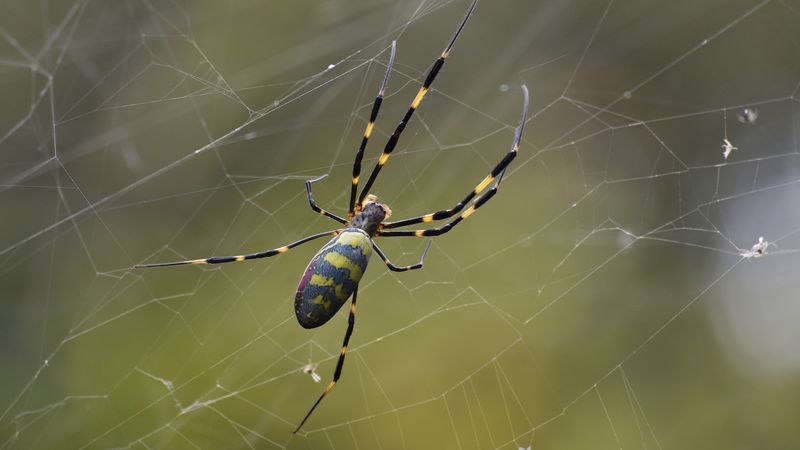
While Joro spiders are indeed non-native to North America, current research suggests they’re not causing the ecological damage typical of truly problematic invasive species. Unlike destructive invasives that outcompete native species, Joro spiders appear to be finding their own niche in the ecosystem.
Studies from Clemson University indicate they primarily catch insects that other native spiders don’t target as frequently. Their diet includes problematic invasive insects like brown marmorated stink bugs.
Researchers continue monitoring their spread and impact, but current evidence suggests Joro spiders may become a naturalized part of North American ecosystems rather than a destructive force requiring aggressive control measures.






